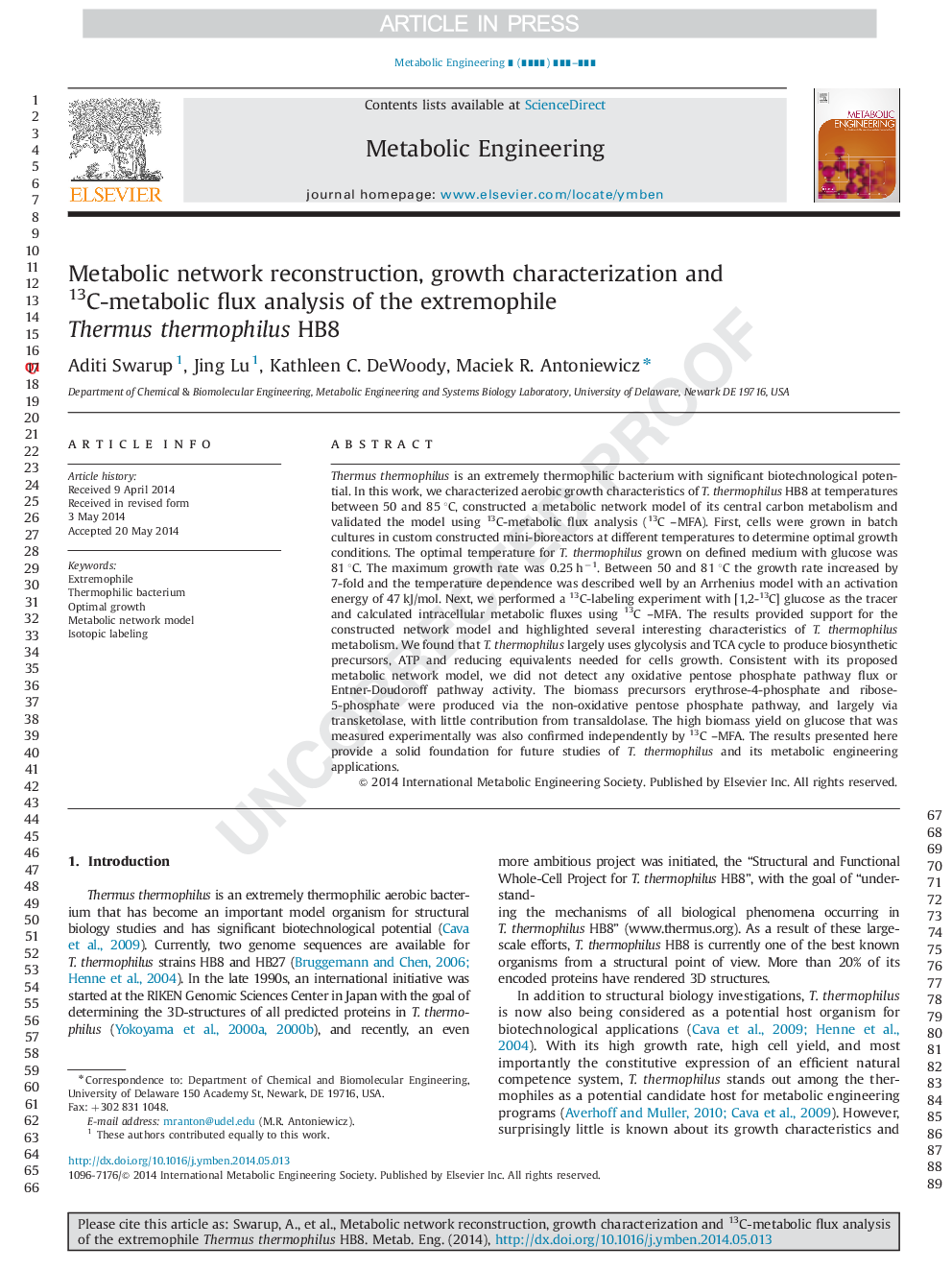| Article ID | Journal | Published Year | Pages | File Type |
|---|---|---|---|---|
| 6494610 | Metabolic Engineering | 2014 | 8 Pages |
Abstract
Thermus thermophilus is an extremely thermophilic bacterium with significant biotechnological potential. In this work, we have characterized aerobic growth characteristics of T. thermophilus HB8 at temperatures between 50 and 85 °C, constructed a metabolic network model of its central carbon metabolism and validated the model using 13C-metabolic flux analysis (13C-MFA). First, cells were grown in batch cultures in custom constructed mini-bioreactors at different temperatures to determine optimal growth conditions. The optimal temperature for T. thermophilus grown on defined medium with glucose was 81 °C. The maximum growth rate was 0.25 hâ1. Between 50 and 81 °C the growth rate increased by 7-fold and the temperature dependence was described well by an Arrhenius model with an activation energy of 47 kJ/mol. Next, we performed a 13C-labeling experiment with [1,2-13C] glucose as the tracer and calculated intracellular metabolic fluxes using 13C-MFA. The results provided support for the constructed network model and highlighted several interesting characteristics of T. thermophilus metabolism. We found that T. thermophilus largely uses glycolysis and TCA cycle to produce biosynthetic precursors, ATP and reducing equivalents needed for cells growth. Consistent with its proposed metabolic network model, we did not detect any oxidative pentose phosphate pathway flux or Entner-Doudoroff pathway activity. The biomass precursors erythrose-4-phosphate and ribose-5-phosphate were produced via the non-oxidative pentose phosphate pathway, and largely via transketolase, with little contribution from transaldolase. The high biomass yield on glucose that was measured experimentally was also confirmed independently by 13C-MFA. The results presented here provide a solid foundation for future studies of T. thermophilus and its metabolic engineering applications.
Related Topics
Physical Sciences and Engineering
Chemical Engineering
Bioengineering
Authors
Aditi Swarup, Jing Lu, Kathleen C. DeWoody, Maciek R. Antoniewicz,
